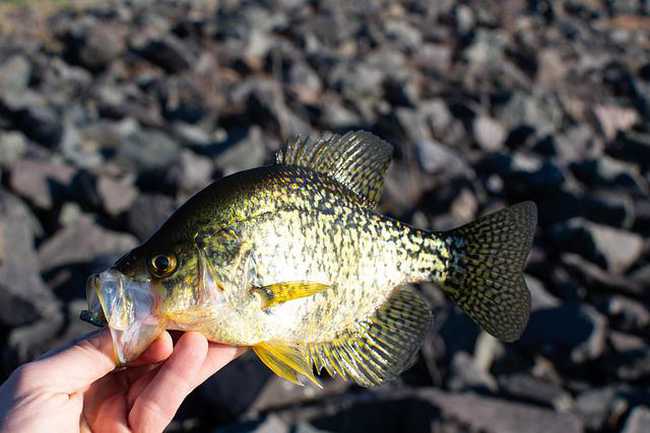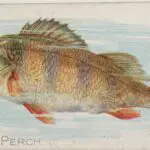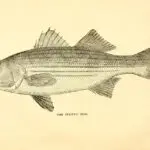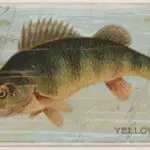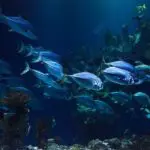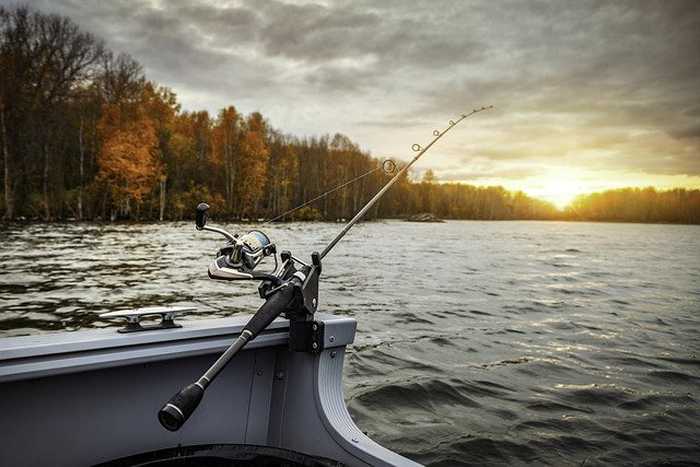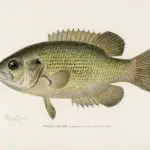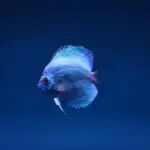Yes, crappie eat minnows. In fact, they’re one of the main things that crappie feed on. Minnows are small fish that live in freshwater lakes and streams. They’re an important part of the food chain because they provide food for larger fish like crappie.
1. What types of minnows do crappie eat?
Crappie readily consume small bluegills, small yellow perch, small bass, along with shiners, suckers, small shad, and minnows. The best bait for crappie are fathead minnows. Fathead minnows are naturally occurring or have been stocked in many crappie fisheries across the continent.
Fathead minnows are a good bait for crappie because they are high in fat and protein content. They also have a hard body which makes them durable when being used as bait. Crappie typically eat smaller fish but will also consume larger prey items if they are available. In terms of size, fathead minnows range from 2-4 inches long on average.
2. How do crappie hunt and eat minnows?
When it comes to hunting and eating minnows, crappie are some of the most proficient predators in the aquatic world. Their ability to locate and consume small baitfish is second to none, and they do so using a variety of methods that have evolved over time.
One of the most common ways that crappie hunt minnows is by simply following them around until they’re close enough to strike. This method works because minnows tend to stay in large schools for protection, and crappie will often position themselves on the outskirts of these schools, waiting for an opportunity to strike.
Another way that crappie hunt minnows is by using their sense of smell to locate them in areas where they’re hiding. This is especially effective during the spawning season when minnows congregate in specific areas to lay their eggs. Crappie will use their keen sense of smell to follow a trail of scent left behind by minnows until they find their prey.
Finally, crappie also use visual cues to locate and eat minnows. They are able to see much better underwater than most other fish, so they can easily spot small baitfish swimming around in open water or hiding among vegetation. Once a crappie has spotted its prey, it will quickly dart forward and snatch it up with its mouth before returning back into cover.
3. What is the nutritional value of a minnow to a crappie?
A minnow is a small fish that is often used as bait by fishermen. Crappies are a type of freshwater fish that belongs to the sunfish family. They are popular among anglers and are considered to be good table fare.
The nutritional value of a minnow to a crappie depends on several factors, including the size of the minnow and the age and health of the crappie. A larger minnow will provide more nutrition than a smaller one, and a healthy crappie will be able to better utilize the nutrients in the minnow than one that is sick or injured. In general, however, a minnow can provide a significant amount of nutrition to a crappie, especially if it is part of their regular diet.
4. Do all size classes of crappies eat minnows?
Yes, all size classes of crappies eat minnows. In fact, minnows make up a large part of the diet for many crappie populations. Minnows are an easy and plentiful food source for these fish, and they play an important role in the growth and survival of crappies.
While all size classes of crappies will eat minnows, larger fish tend to consume more of them than smaller fish. This is because minnows are a high-energy food source that can helplarger fish grow quickly and maintain their body condition. Smaller fish, on the other hand, can get by on a diet that includes fewerminnows.
There are some exceptions to this general rule, however. In some cases, smaller crappies may actually consume moreminnows than larger fish simply because they have a higher metabolic rate and need to eat more often to survive. Additionally, water temperature can also affect how much crappies eat; in colder water ,for example ,fish generally eat less than they do in warmer water. But overall ,it is fair to say that all size classes ofcrappies do indeed eat minnows.
5. Are there regional differences in what types of minnows crappies prefer to eat?
There have been several studies conducted on the topic of regional differences in what types of minnows crappies prefer to eat, and the results are mixed. Some studies seem to indicate that there are indeed regional preferences, while others find no significant difference. Overall, it seems that more research is needed in this area in order to come to a definitive conclusion.
One study, conducted in North Carolina, found that crappies preferred bluegill sunfish over other minnow species when given a choice. In another study from Tennessee, however, researchers found that crappies were just as likely to eat any type of minnow they were offered. So it’s difficult to say for sure whether or not there is a preference based on region.
It’s worth noting that some experts believe that the reason there may be conflicting results is because different methods are used to catch and collect crappies in different regions. For example, live bait traps are commonly used in the South, while cast nets are more popular in the Midwest. This could potentially impact the results of these studies, as different types of bait will attract different types of fish.
Overall, more research is needed in this area before we can say for sure whether or not regional differences exist when it comes to what types of minnows crappies prefer to eat.
6. Does the time of year affect what type or size of minnow a crappie will consume?
Although there are many variables that can affect what type or size of minnow a crappie will consume, time of year is one of the most important factors. In the spring and summer months, when water temperatures are warmer, crappies will generally prefer smaller minnows. This is because they are more active in warm water and need more energy, which they get from smaller prey. In the fall and winter months, when water temperatures are cooler, crappies will generally prefer larger minnows. This is because they are less active in cool water and don’t need as much energy, so they can afford to eat bigger prey.
Of course, there are always exceptions to the rule. If a crappie is particularly hungry or has been swimming around a lot and needs lots of energy, it may go for a bigger minnow regardless of the time of year. Similarly, if a crappie is not very hungry or hasn’t been swimming around much and doesn’t need as much energy, it may go for a smaller minnow regardless of the time of year. But in general, time of year does have an effect on what type or size of minnow a crappie will consume.
7. If water temperatures rise/fall, does that impact what size or type of minnow a crappie will eat?
The size and type of minnow a crappie will eat is determined by the temperature of the water. If the water is warm, the crappie will prefer smaller minnows. If the water is cold, the crappie will prefer larger minnows.
8. Is there any benefit for a fisherman to use live versus artificial bait when targeting Crappies specifically for their love ofminnows?
There is some debate among fishermen as to whether live bait or artificial bait is better for Crappies. Some say that because Crappies love minnows, using live bait is the best way to go. Others argue that artificial bait can be just as effective, if not more so. So, what’s the verdict?
It seems that there are benefits to both live and artificial bait when targeting Crappies. Live bait will undoubtedly attract more attention fromCrappies due to its natural movements and smells. However, this does not necessarily mean that it is more effective in terms of actually catching fish. In fact, many experienced fisherman believe that artificial lures are just as good, if not better, at attracting and hooking Crappies.
One reason why artificial lures may be more effective is because they can be specifically designed to target Crappies’ weaknesses. For example, a lure that mimics the swimming motion of a minnow may trigger a Crappy’s instinctual response to chase and eat smaller prey items. Similarly, brightly colored lures may also be appealing to Crappies since they are attracted to shiny objects. Ultimately, it comes down to personal preference and what works best for you as an individual fisherman.
